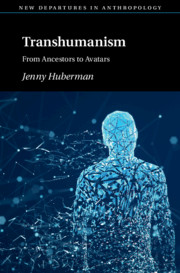Book contents
- Transhumanism
- New Departures in Anthropology
- Transhumanism
- Copyright page
- Dedication
- Contents
- Acknowledgments
- Introduction
- One Is Transhumanism a Revitalization Movement?
- Two Ancestors and Avatars
- Three Happily Ever After
- Four The Social Skin, the Antisocial Skin, and the Pursuit of Morphological Freedom
- Five Decoding the Self
- Six Rethinking Kinship Systems
- Seven From Original Affluence to Posthuman Abundance
- Conclusion
- Notes
- Bibliography
- Index
Three - Happily Ever After
Transhumanism and the Hedonistic Imperative
Published online by Cambridge University Press: 10 December 2020
- Transhumanism
- New Departures in Anthropology
- Transhumanism
- Copyright page
- Dedication
- Contents
- Acknowledgments
- Introduction
- One Is Transhumanism a Revitalization Movement?
- Two Ancestors and Avatars
- Three Happily Ever After
- Four The Social Skin, the Antisocial Skin, and the Pursuit of Morphological Freedom
- Five Decoding the Self
- Six Rethinking Kinship Systems
- Seven From Original Affluence to Posthuman Abundance
- Conclusion
- Notes
- Bibliography
- Index
Summary
This chapter explores transhumanist attempts to live “happily ever after.” As British philosopher and transhumanist Dave Pearce expounds in The Hedonistic Imperative, “nanotechnology and genetic engineering will “eliminate aversive experience from the living world” and usher in “a sublime and all-pervasive happiness”(Pearce 1995). This chapter thus asks, how exactly do transhumanists conceive of the good life? By what means do they seek to usher it in? How do transhumanist conceptions of the good life compare and contrast with the way peope in other societies have understood and pursued the good life? This chapter seeks to further our understanding of “the hedonistic imperative” and in so doing, further illuminate some of the values transhumanists hold dear.
Keywords
- Type
- Chapter
- Information
- TranshumanismFrom Ancestors to Avatars, pp. 68 - 95Publisher: Cambridge University PressPrint publication year: 2020

